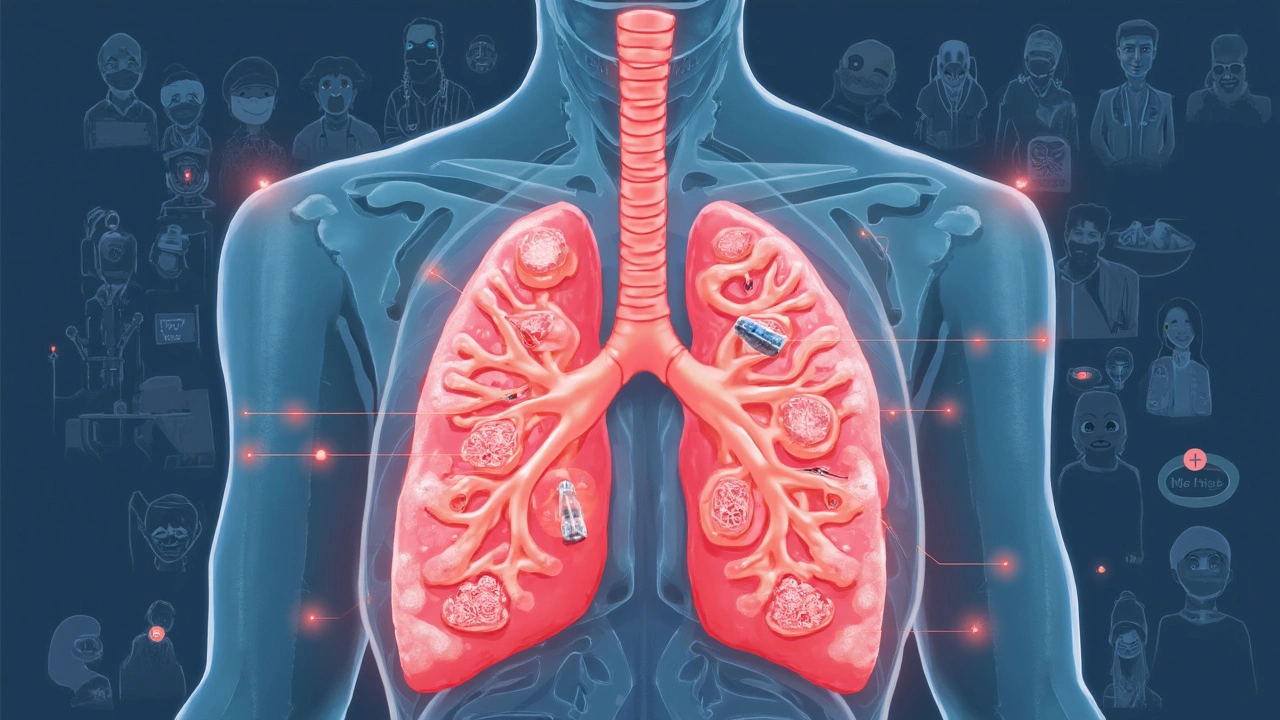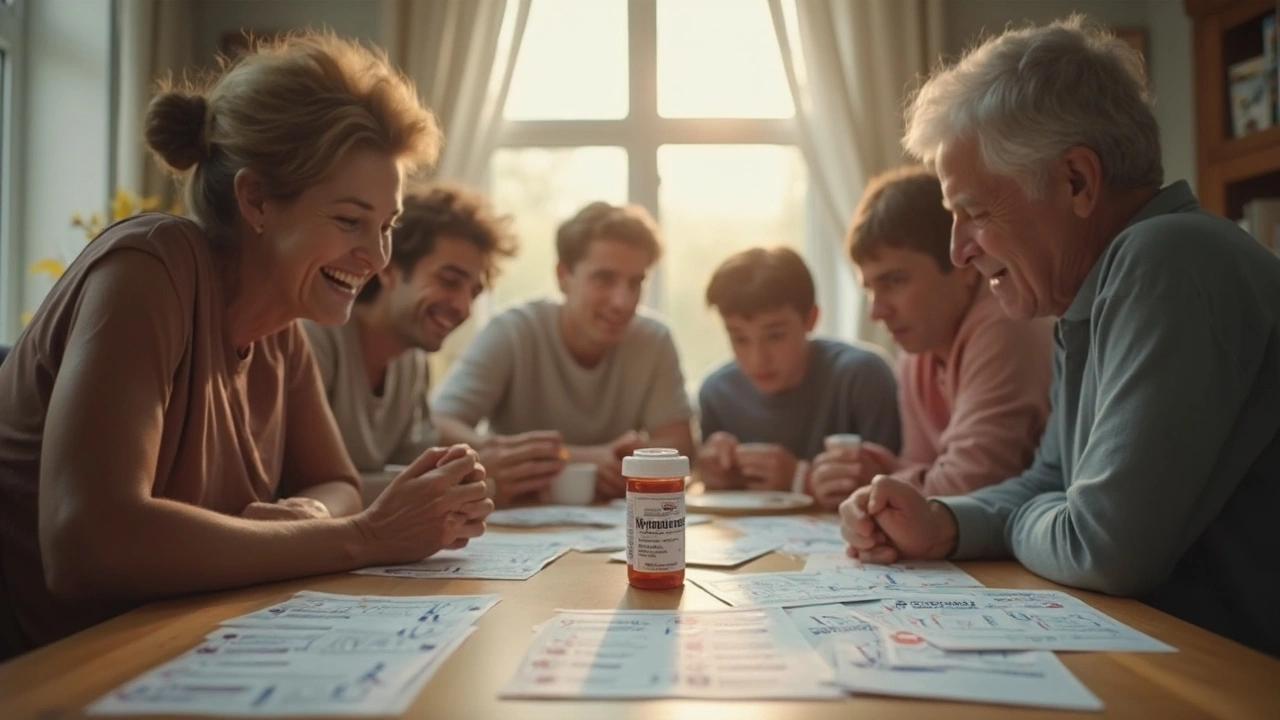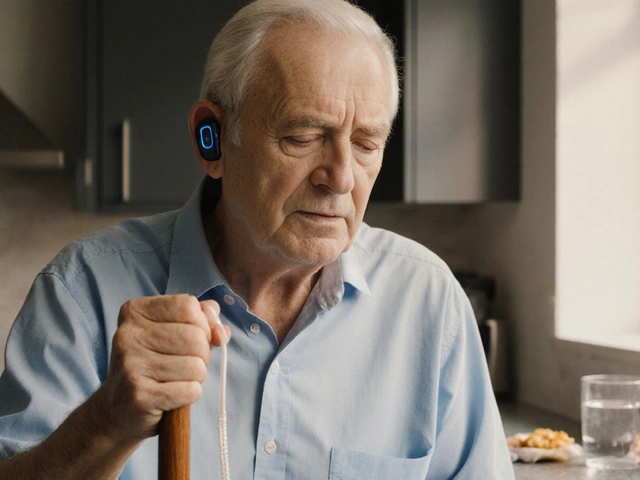Picture this: you’re sitting in your doctor’s office in Darwin, sweating in the dry season, and he drops the word “Myambutol.” Instantly, your brain spits out questions. What is this stuff? Will it sort me out, or will I end up with more problems than I started with? Here’s the deal: Myambutol, known in the chemist as ethambutol, isn’t dropping into your life by mistake. This drug is a bit like the unsung mate in the world of tuberculosis (TB) treatment—vitally important, but often misunderstood and a little underappreciated. Friend or foe? Let’s get into it.
What Exactly is Myambutol and How Does it Work?
First, let’s make it simple. Myambutol is the brand name for ethambutol, a medication that’s been around since 1961. It’s on the World Health Organization’s list of essential medicines. That means it’s considered crucial for basic health care, especially where TB is still causing big problems—which, believe it or not, includes over 10 million new cases worldwide each year. Myambutol isn’t a solo rockstar but more like the reliable bass guitarist in a TB treatment band. It never works alone. Doctors always prescribe Myambutol alongside other TB drugs—usually isoniazid, rifampicin, and pyrazinamide. Why? Tuberculosis bacteria are slippery characters. Hit them with just one drug, and they’ll adapt and become resistant. It’s like using mosquito spray on only half your body and hoping for the best—doesn’t work.
Here’s what Myambutol actually does: it messes up the bacteria’s ability to build a wall around itself. Think of the TB bug getting halfway through building a fortress and suddenly their bricks stop sticking together. Myambutol achieves this by interfering with the production of something called arabinogalactan, an essential component of the bacterial cell wall. No wall, no survival.
Now, even when things sound straightforward, there’s more under the hood. Myambutol targets Mycobacterium tuberculosis, the culprit behind nearly all TB infections. The bacteria can hunker down inside your lungs, but also wander off to make trouble in your brain, kidneys—almost anywhere. Myambutol is especially valuable because it can actually cross into most tissues, not just sit around in your lungs. This matters for people who get TB in less obvious places, like the spine or lymph nodes.
Dosage is important too. Doctors don’t just pick a number out of a hat. They base the dose on body weight, usually prescribing 15-25 mg per kilo a day. For example, if you’re pulling 70 kilos on the scale, you’ll likely be asked to swallow between 1,050 mg and 1,750 mg each day. Most people get better with a daily dose, but sometimes, especially during the "continuation phase" of TB treatment, it’s taken less frequently.
A common combo: four drugs for two months (intensive phase), followed by two drugs (isoniazid and rifampicin) for four months. Myambutol’s job is to pull its weight in the opening months—suppressing bacteria before they get a chance to multiply or mutate.
Here’s the thing folks don’t always mention: Myambutol’s all about patience. It won’t have you bounding up like a superhero overnight. The real win is in consistency and time—the bacteria are slow growing, so the treatment has to match their pace.
Got questions about kids? Myambutol is used in children as well, but with careful dose adjustments. For anyone with kidney problems, doses need to be changed, because the drug leaves your body through your urine. Your doctor will watch this closely and may order kidney function tests.
Want some hard facts?
| Fact | Number / Details |
|---|---|
| Year Ethambutol Approved | 1961 |
| Global TB Cases (2024 Est.) | ~10.6 million |
| WHO Essential Medicine? | Yes |
| Average Adult Dose | 15-25mg/kg/day |
| Main Use | TB Combination Therapy |

Side Effects and Safety: What Should You Be Watching For?
Everyone wants a magic pill. Sadly, Myambutol doesn’t come with zero risks. The most famous side effect—and the one your doctor will probably warn you about right away—is changes to your vision. Not blurry, watery eyes like when you get sweat in them, but something called "optic neuritis." That’s a fancy term for inflammation of your optic nerve, making you struggle to see green or red colours and leading to blurred vision. Left unnoticed, it can get worse. Now, don’t panic—this side effect is rare, especially at the doses your doctor will suggest, and if you’re using Myambutol for a few months like most folks, the chances shrink even further. But here’s a true tip: the moment things look foggy, head right back to your doctor. Catch it early, and stopping the drug often reverses the problem. Don’t tough it out thinking "She’ll be right.”
Let’s break down other side effects:
- Allergic reactions (rash, fever, joint aches—pretty uncommon, but doctors take them seriously)
- Joint pain (sometimes called "gouty attacks"—rare, but can happen if you already have kidney issues)
- Upset stomach—nausea, vomiting, or just a generally sour gut
- Liver effects—most often mild, but if you combine TB meds for months, you have to check liver function
If you wear glasses or contact lenses, or if you’re colour blind, tell your doc. You might not notice the subtle colour changes, so the doctor may send you to an eye specialist during treatment. Little tip—if you have to drive or work with sharp tools and suddenly your vision seems "off," stop and get checked. No job or errand is worth losing your eyesight over.
Talking about women who are pregnant or breastfeeding—there isn’t much evidence showing Myambutol is dangerous in pregnancy, but as with any medicine, it’s about weighing benefits and risks. If there’s another safe option, your doctor may suggest it. For breastfeeding, small amounts can get into breast milk, but it’s probably okay if the mother has to take Myambutol, especially if TB risk is high.
So what do you do to keep things safe?
- Take your medicine at the same time, every day. Don’t skip doses.
- Let your doctor know if you wear glasses, are colour blind, or have any vision problems.
- Tell your doctor right away about vision changes, rashes, or unexplained aches.
- Don’t double-up on missed doses—just take the next one as normal.
- Go to every routine checkup, even if you feel fine. Blood and vision tests are there for a reason.
- Keep an up-to-date list of all your meds—many people with TB are on multiple prescriptions.
Interesting fact: Some people have a genetic difference (the "Leber hereditary optic neuropathy" mutation) that makes them more likely to get vision problems. If this runs in your family, especially among men, make sure to mention it to your doctor.

Tips for Managing TB Treatment with Myambutol
Getting diagnosed with TB feels overwhelming. Suddenly you’re told to swallow a handful of tablets every morning, avoid triggers, maybe even stay home from work or school. There’s a lot to juggle. But hey, there are tricks you can use to make the road smoother.
Routine is king. Pick a time, stick to it—ideally first thing in the morning before breakfast with a full glass of water. Myambutol can interact with antacids, so give it at least 2 hours apart from anything that contains aluminium hydroxide or magnesium (those are common in heartburn and indigestion meds). This small tip goes a long way—the absorption can drop if you take them together.
TB treatment is a marathon, not a sprint. Treatment lasts at least six months, and sometimes longer if forms of TB are resistant or you missed doses in the past. Here’s the secret: don’t go solo. Most Australian clinics run "DOTS" (Directly Observed Therapy Short-course) programs, where a nurse or health worker watches while you take your pills. Sounds annoying? It’s a big reason why TB cure rates in Australia hover above 96%—nobody slips through the cracks. Still, lots of people opt for supervised dosing, especially at the start.
Keep a symptoms diary. Literally jot down how you feel, marking vision changes, aches, tiredness, and mood. It helps you spot patterns and gives your doctor a detailed picture if something goes off track. Technology can help—a quick daily text reminder or setting a phone alarm works wonders. Some apps (like MyTB or Care4Today) can also help track symptoms, doses, and even side effect alerts.
Watch what goes in. Alcohol isn’t banned, but it does add strain to your liver, already working hard to clear out TB meds. Best move if you can manage: ditch the booze while on treatment. Plus, chat with your doc about any herbal supplements—some can mess with how the liver handles drugs (especially St. John’s Wort and ginseng).
Diet matters. TB eats up your energy, so aim for plenty of protein, not just carbs. Eggs, chicken, fish, and legumes are your friends. Feeling queasy? Small, regular meals help. Hydrate often—Darwin’s humid heat steals water faster than you’d guess.
Social stuff can get awkward—lots of people have outdated ideas about TB. Here’s a myth buster for your mates: after two weeks of proper treatment, most people are no longer infectious. Keep open communication with your employer or school, and ask your doctor for a letter if you need time off or support for returning to normal activities.
If you’re travelling, even just to Alice Springs or up to Bali, bring enough meds for the trip and carry a letter from your doctor explaining you’re on treatment. Authorities like to know what’s in your bag, so don’t take chances with unlabelled medications.
Family plays a huge role, especially with kids in the house. TB is tough to catch just from casual contact, but close family may still need to get checked—better safe than sorry. Teach everyone in your household about basic hygiene: coughing into elbows, washing hands, ventilating rooms. It’s not just about TB—those habits keep other bugs at bay too.
Last tip: know your resources. Darwin and most Australian cities have specialist TB clinics staffed by folks who genuinely care and are experts at this. They guide, support, and answer weird questions you don’t want to Google at 2am. They’ll cheer when you finish your last dose and call if you miss appointments. Don’t be shy—lean on them.
Here’s your final takeaway: Myambutol is an essential part of the tuberculosis treatment toolbox. Used right, it can knock the TB bugs flat and get you back to your life. Respect the risks, stick to the plan, and let your team in. Healing is a team sport, and you don’t need to play solo. Stay healthy, keep asking questions, and remember—every successful round of TB treatment makes your whole community that little bit safer.



Joshua Pisueña
25 June / 2025Hey folks Myambutol is a solid part of TB therapy keep it on your radar